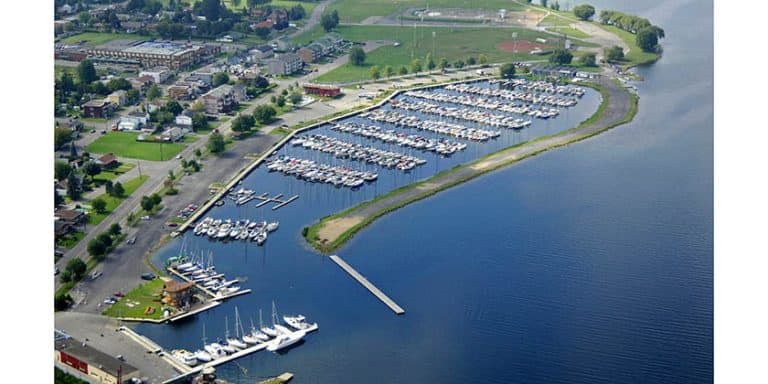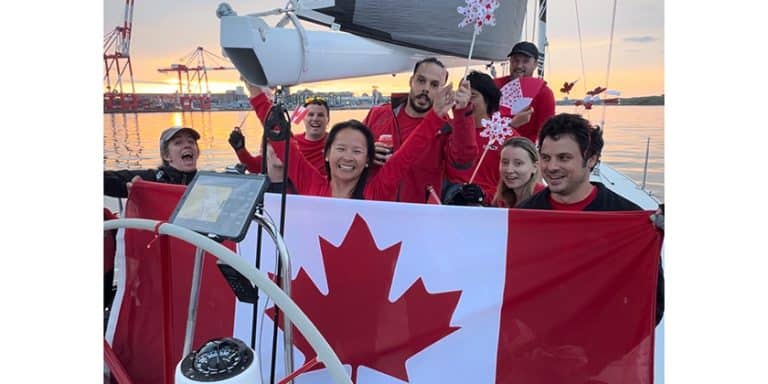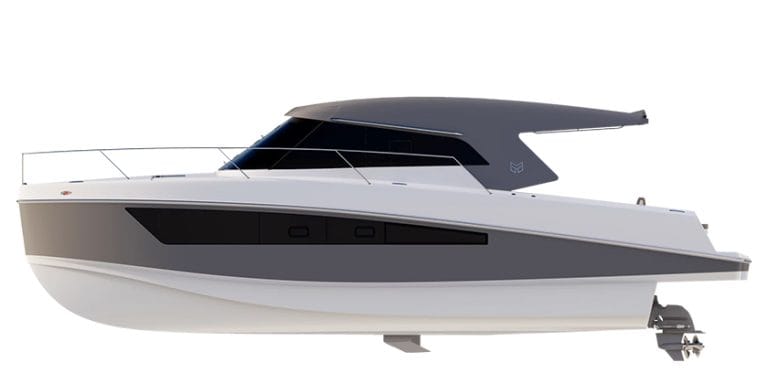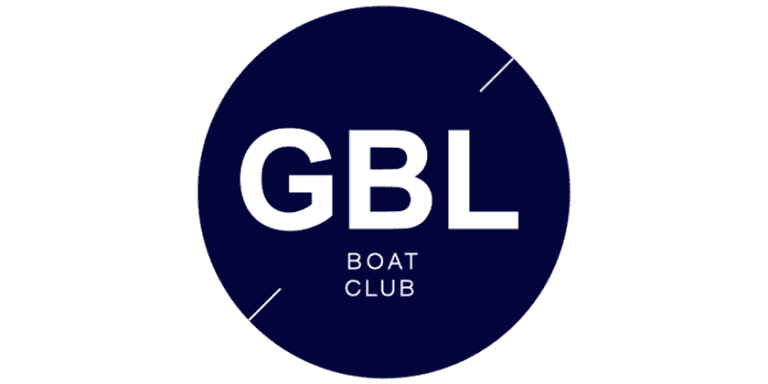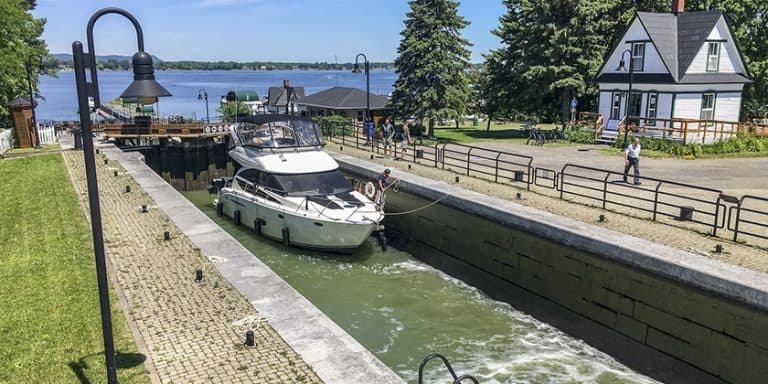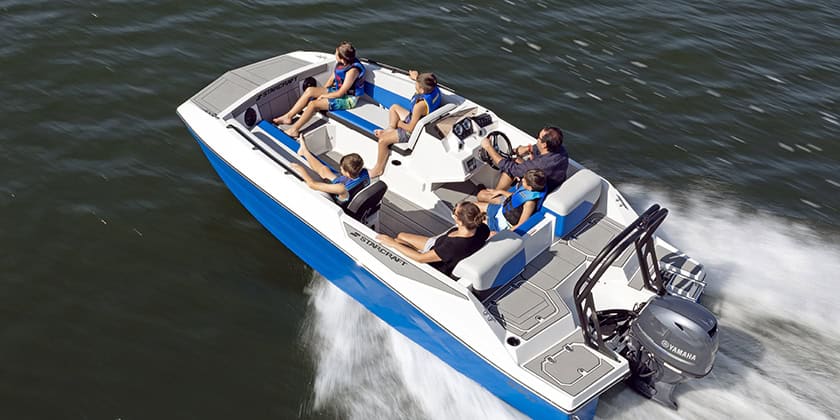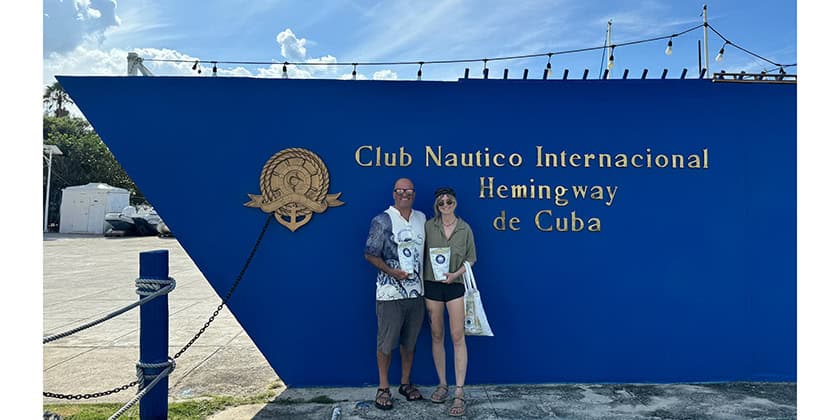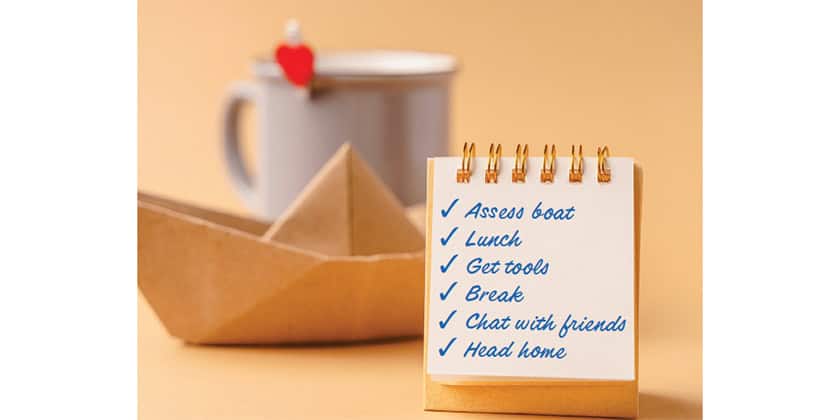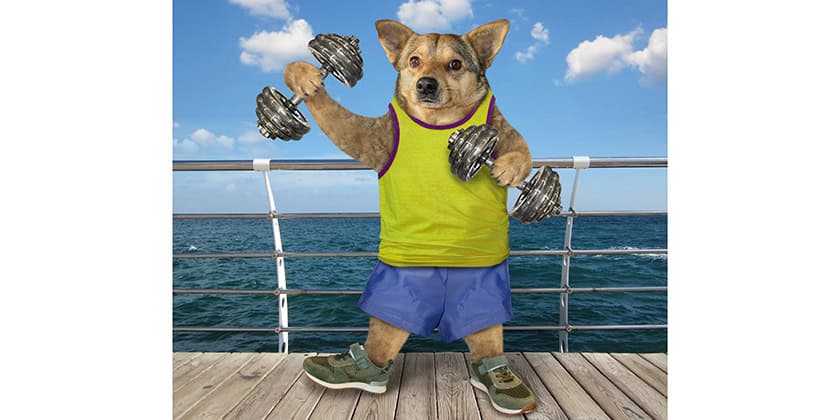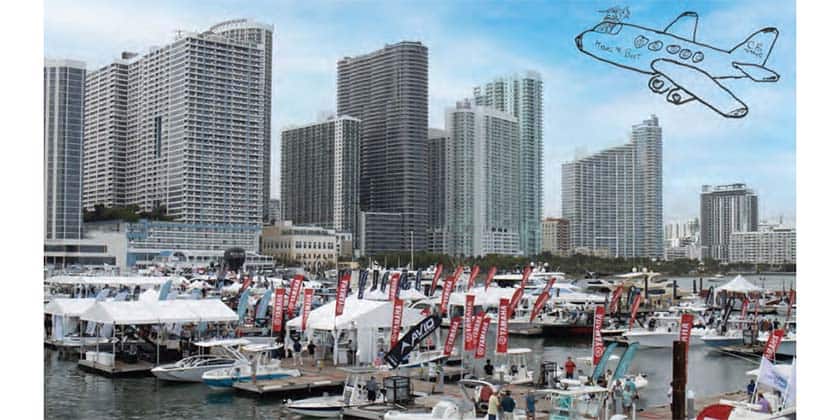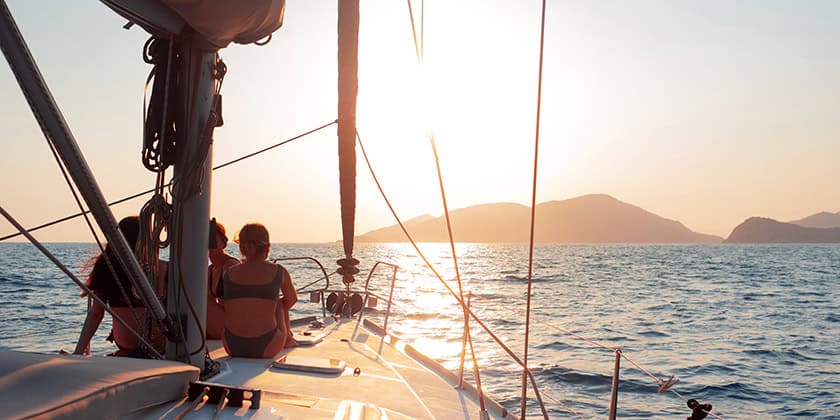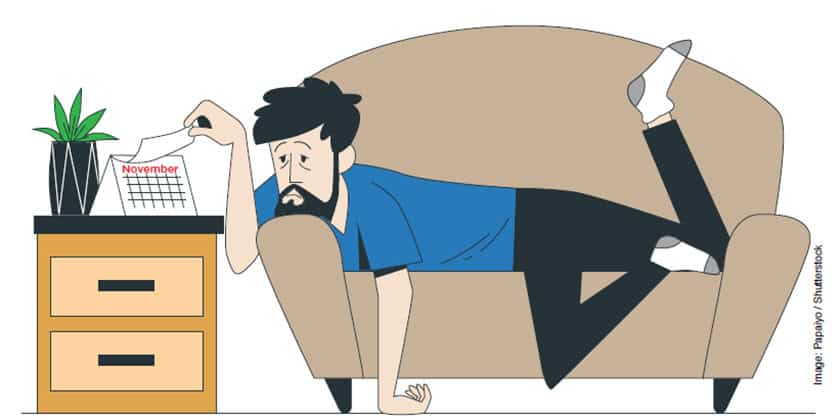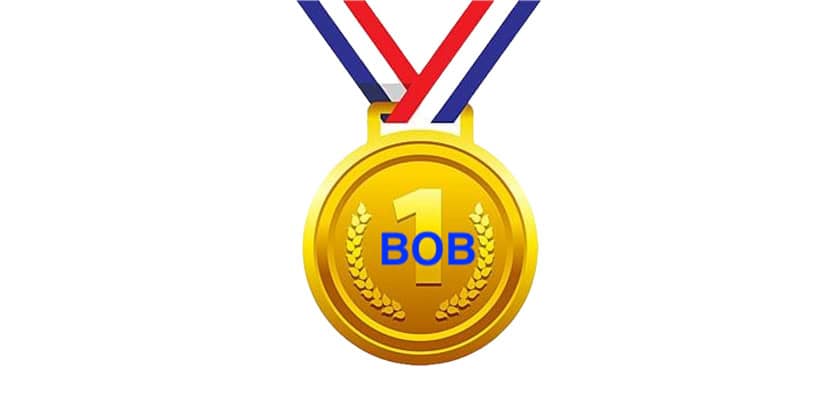CYOB meets the Volvo 65s
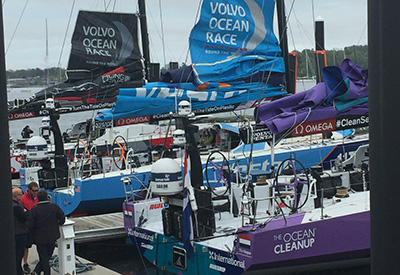
June 14, 2018
What a thrill it was to view the Volvo Ocean 65s up close and personal! Nothing like sitting just above the windward mark, telephoto lens at the ready, during the Gurney’s Resorts In-Port Newport Race on Saturday, May 19th – assuming the boats wouldn’t make a wide rounding. The program is a well-oiled machine with parts and manpower to ensure that everything runs smoothly.
Some key facts:
– The first race, known as the Whitbread Round the World Race, took place in 1973-74
– 161 boats have completed since it began, with over 2,000 sailors
– In 2001-2002 the race was officially known as the Volvo Ocean Race
– Volvo bought the race in 1997 and is jointly owned by Volvo Car Group and Volvo Group
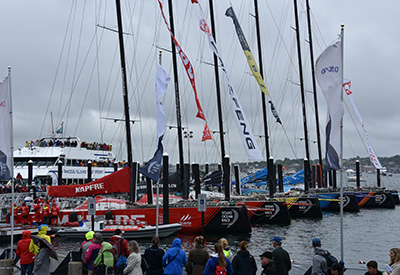 Some new rules greeted the teams for this running of the Volvo Ocean Race to create flexibility and a clearer pathway for women and younger sailors to take part on the race. Skippers now have the option to change the crew line-up on each leg of the race. Each team has an OBR (on board reporter) who ‘reports’ on the race with videos, photos and text on a daily basis, changing boats each leg of the race. All male crews may take only 7 members, but are able to add 2 females to make a total of 9. Of these nine, two must be under the age of 30. All female crews are allowed 11 members and 10 can be accomplished by having an even male/female split – all having huge implications in terms of life on board.
Some new rules greeted the teams for this running of the Volvo Ocean Race to create flexibility and a clearer pathway for women and younger sailors to take part on the race. Skippers now have the option to change the crew line-up on each leg of the race. Each team has an OBR (on board reporter) who ‘reports’ on the race with videos, photos and text on a daily basis, changing boats each leg of the race. All male crews may take only 7 members, but are able to add 2 females to make a total of 9. Of these nine, two must be under the age of 30. All female crews are allowed 11 members and 10 can be accomplished by having an even male/female split – all having huge implications in terms of life on board.
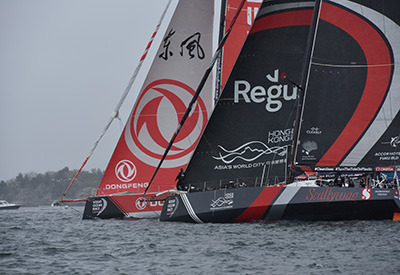
On Friday, I was treated to a VIP tour of the boatyard – or the travelling pit crews -where the expert mechanics, sailmakers, boat builders, engineers and electricians hang out. But instead of just one car to service in a stationary pit, as in the Formula 1 circuit, they have seven boats, and these teams travel with their containers to each stopover. Not only do they have to ensure that the boats are working properly and in good condition, but they have to fix and maintain everything in accordance with strict one-design rules. Eight months prior to the boats’ debut in Lisbon, 30 experts and 6,000 hours of labour were required to rebuild and upgrade the fleet to class standards. New cameras were installed at deck level and aloft with new deck hardware and antenna framing, as well as new masts from Southern Spars. All winches were stripped and rebuilt, and rudder and keel mechanisms dismantled and checked.
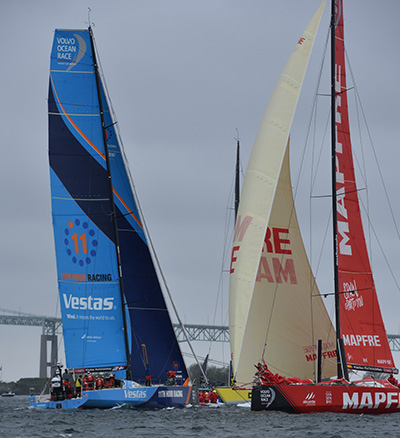 Next up was the Ocean Summit – truly an eye-opening experience of how much one-use plastic is now in our world. Although plastics are convenient and have good uses, these are far outweighed by the harm done to the environment. Too few people know about the plastic pollution in the ocean and more importantly, the solution to the problem. With 8 million tons of plastic dumped in the ocean every year (equal to a full garbage truck per minute) there will be more plastic than fish in the ocean by 2050. Three years ago the theme of the Volvo Ocean circuit became sustainability. Two of the current boats now take water samples throughout the race. Through this programme they hope to promote discussion, create local awareness and call on businesses, government and individuals to take action and turn the tide on plastic.
Next up was the Ocean Summit – truly an eye-opening experience of how much one-use plastic is now in our world. Although plastics are convenient and have good uses, these are far outweighed by the harm done to the environment. Too few people know about the plastic pollution in the ocean and more importantly, the solution to the problem. With 8 million tons of plastic dumped in the ocean every year (equal to a full garbage truck per minute) there will be more plastic than fish in the ocean by 2050. Three years ago the theme of the Volvo Ocean circuit became sustainability. Two of the current boats now take water samples throughout the race. Through this programme they hope to promote discussion, create local awareness and call on businesses, government and individuals to take action and turn the tide on plastic.
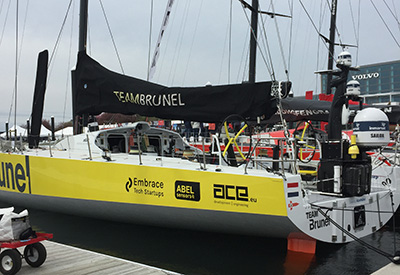 Find out more about their sustainability strategy http://www.volvooceanrace.com/en/the-future/sustainability.html How can you help?
Find out more about their sustainability strategy http://www.volvooceanrace.com/en/the-future/sustainability.html How can you help?
– Reduce your consumption of plastic bags and other one-use items.
– Recycle plastics properly
– Advocate for laws to ban plastic pollution
– Encourage companies to improve their plastic management (like the use of drinking straws)
Third on my list was a VIP tour of Brunel, a Dutch based team who first became involved in the race in 1997. Definitely not designed for comfort, these machines are truly awe-inspiring. With 9 pipe berths, an open toilet bowl, 2-burner stove, freeze-dried food and water made through a de-salinator, life on this traveling carbon fibre hotel is sparse and very dark below decks. When the boats tack, everything from gear, to sails, to the navigator’s table are moved to the windward side of the boat.
Finally, was the chance to ride on a photo boat for the Gurney’s Resorts in-Port race. What a thrill to see these race machines do their paces on a windward-leeward course right off the walls of Fort Adams. Unlike the ocean segment of the race, there is a lot of tacking and grinding to be done, as well as sail changes – a true only marathon completed in one hour of racing. With upwind sail areas of 296m2 and downwind sail areas of 578m2 there is a lot of sail to bring in. When either you tack or jibe, the front sail must be almost completely brought in on the roller furling and then let out again. My arms get sore just thinking about all the grinding.
With sails, hulls, spars, rigging, electronics and hardware all identical the winning depends solely upon skill, application and teamwork. Download the Volvo Ocean Race app and follow the teams as they head back across the pond.
– Katie Coleman Nicoll

